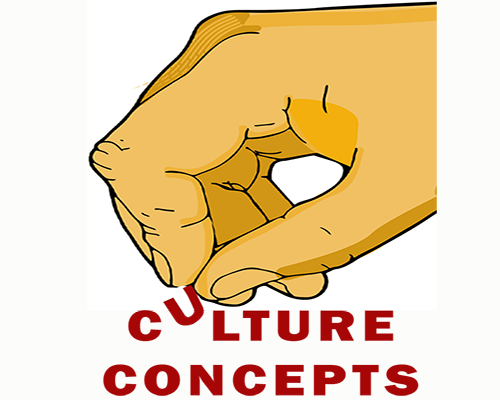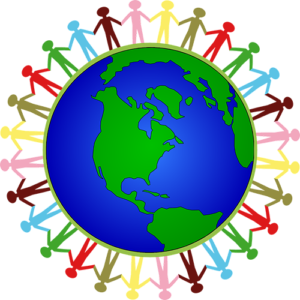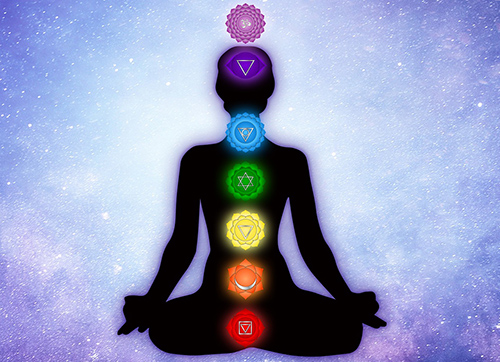
The inspiration for this article came from a post I saw in a Facebook group I am in. It was quite a long post about how the author thought that people shouldn’t use chakras within their Reiki practice because the idea of chakra’s isn’t Japanese in origin like Reiki is, and that doing this was some kind of cultural misappropriation, and that people should really just do things from their own culture. Then later in the same post the author went on to justify that it was ok for them to be practicing and teaching Reiki – even though they aren’t Japanese… ?.
It was quite a muddled mixed messaged post, with lots of internal contradictions, and I suspect ultimately written for self serving purposes as a way for the author to try to say that her Reiki was ‘better’ than other people’s, because it was more ‘pure’. It did catch my interest to some degree though, because a lot of people seemed to take her message seriously. The recently emerging idea of ‘cultural appropriation’ has been promoted strongly by certain groups and individuals in our society, and similar to the author of the Facebook post mentioned above, this often seems to be largely for self serving purposes rather than for any true concern for, or benefit to people of different cultures. But little by little this idea has made its way into popular discourse and is influencing, and I would argue distorting, how we approach many different topics and practices. So I thought it would be worthwhile to explore the concept of cultural appropriation in relation to qigong practice.
Is it Offensive to Use Something from Another Culture?
Embedded within the concept of cultural appropriation is the idea that to use something from another culture is somehow offensive to people of that culture, or that perhaps by someone else using or doing something from that culture it is somehow ‘stealing’ or taking something away from people of that culture.

While it is certainly true that people can use things from another culture in a way that is mocking or denigrating to that culture – which can be offensive, in the modern discourse this is often expanded too far into any use of things from that culture – all the way down to simple things like wearing clothing from a culture other than your own. Of course context matters here – but being overly restrictive in not thinking it is acceptable for a broad range of people to make use of things from within a culture does little to protect that culture, and in fact can often stifle and suppress the expression of the beauty within a cultural heritage.
As a simple example of this, the first time I ever went to China I wanted to buy some Chinese shirts while I was there, as I liked the look of them and had found it hard to find good ones that fit me well in my home country. I did manage to find some good shirts which I liked in Beijing, but then I was unsure about wearing them while in China, in case it was somehow culturally inappropriate for me to do that. If you’ve been to China you will be aware that most people there don’t wear traditional Chinese clothes, they tend to wear more western clothes similar to what is worn in most of the developed world, so wearing a traditional Chinese shirt would really make you stand out. Then one day I was outside the hostel I was staying in and I saw one young guy walking down the street with his head held high wearing a shirt very similar to one of the ones I had just bought. He did really stand out!, but he was quite comfortable and confident in doing so, and that made me think – if it was ok for him to wear his shirt out in a normal public situation, then it was probably ok for me to wear similar shirts as well. So from then on I wore similar kinds of shirts almost everyday throughout my trip to China.
I also wear these kinds of shirts quite regularly when I am in other countries. I often wear them when practicing qigong as they are very comfortable for that, and I sometimes wear them in other social situations as well – again because they are comfortable and I like the look and feel of them. My wearing those clothes is in no way disrespectful to Chinese culture, and in no way takes away from any Chinese people who wish to wear that same style of clothes. If anything it brings the value and style of this aspect of Chinese culture to more people’s awareness and helps to make it acceptable for more people to appreciate and embrace this aspect of the culture. I often get compliments on my Chinese shirts when I wear them in social situations, from a whole range of different people, and particularly from Chinese people.
Is Qigong Really a Cultural Practice?
Now bringing our discussion specifically to the subject of qigong, I think it is worthwhile to first consider whether qigong is even really a cultural practice – or perhaps it is something else?
I actually wrote a short article about this a few years ago (actually it was over eight years ago now – doesn’t time fly?) with the somewhat provocative title “Newsflash: Qigong is not Chinese…”. So in some ways this article is an update and extension of that earlier one. Of course qigong is rooted in and developed from Chinese culture, and I think it is important to acknowledge and respect the cultural roots that lead to the development of such a nuanced and sophisticated system for understanding and working with our energy, which brings benefit to so many people. But at the same time we need to consider carefully what it is we seek from qigong, and whether that is cultural, or something more universal.
Universal Truths
There are some people that do view qigong as primarily a cultural practice, or at least something that is so connected to culture that it can’t be understood outside of that context, but if we look more widely at cultures all around the world we find that almost every ancient culture had concepts similar to the core concepts we find within qigong – concepts of vital living energy and its flow, and even practices that work with it. In India yoga has the concept of prana, ancient Greeks talked about pneuma, in Hawaii they recognized ha, and even the Christian scriptures speak of the ‘breath of life’. While these different cultures sometimes focused on different aspects of vital energy, and developed more or less sophisticated methods for working with it – clearly the underlying concepts are universal to our human experience rather than originating from a single culture.

The ancient Chinese did not practice qigong primarily because it was part of their Chinese culture, they practiced it because it worked! Other cultures also studied and worked with their vital energy or qi, not just because it was part of their culture, but because it was something that gave them real benefits.
The ancient Greeks are well known to have made some great contributions to the field of mathematics, but we don’t consider the study of mathematics to be a cultural practice… We consider it to be a real and useful subject to study – we aren’t too concerned which culture contributed which parts to our understanding of mathematics (many cultures contributed to our overall understanding of mathematics over the ages), we simply take all that is useful from all of the different cultures to inform our understanding, and continue to work to develop our understanding even further today.
The same is true, or should be true of qigong if we consider it to be something that is ‘real’. We give more respect to the art, the work, the contribution of all the many people who have contributed to our understanding of our vital energy over the millennia, by recognizing their contributions as containing real and universal principles which we can continue to learn even more about both from other cultures and from our own study and practice, than if we consider that what they discovered is somehow confined to only their culture.
Othering leads to limitation and distortion
Further, if concepts and ways of working with our vital energy are viewed as purely cultural, this limits application of that knowledge, and often leads to distortion of that knowledge, particularly if it is seen as primarily relevant to a foreign culture.
Viewing something as ‘foreign’ can give it a sense of ‘Otherness’, something that somehow doesn’t quite fit within your own culture. This can lead to a sense that due to this otherness, it cannot be understood within your own cultural context – it becomes mysterious and unknowable. This of course then acts as a barrier to true understanding, and can lead to beliefs you may have encountered such as that Chinese people are somehow just inherently better at qigong, and somehow just know more about it because of their culture. They have an advantage because of their otherness, which means that you from another culture will somehow never be as good, or understand the principles and practices as well.

Having visited China many times, and had extensive contact with the Chinese diaspora in other countries, I can assure you that this is not true. The average Chinese person has very little knowledge or understanding of qigong. Unfortunately due to various political disruptions, qigong and related arts and bodies of knowledge have not been widely taught amongst recent generations. There are of course some who have had the fortune to learn and carry on these arts, but the vast majority have had little exposure to and even less understanding of them. It is true that they may have understanding of some of the cultural elements which surround the arts – but they generally have little to no understanding of the arts themselves. And yet, if you allow yourself to fall into the cognitive trap of viewing knowledge of qigong as inherently foreign – you can easily mistake this understanding of surrounding cultural artifacts as understanding of the subject itself. It plays into the mysterious ‘otherness’ of the subject and misdirects your attention from the true and valuable principles which can bring you real benefits. The emphasis of study can be easily shifted to a cultural facade, causing the very essence of the practice to be overlooked, and eventually making the practice empty rather than rich and meaningful.
Seeking True Knowledge
On the other hand, if we seek true knowledge we will be able to look beyond the cultural façade to the true and valuable essence of the practices. We will be able to recognize that the principles of these practices are universal and supercede culture. We will be able to put our focus on the real meaning and value of the practices. We will also be inclined to draw from all relevant available sources of knowledge to deepen our understanding and make it more accurate and useful.
If our purpose is to work with our vital energy to cultivate health, vitality, resilience, and equanimity, then the cultural source of useful information is not important, we will draw from any and all cultures if what we find helps us to achieve our purposes. Each culture has focused on different aspects of our energy, and as they have developed on somewhat different paths, their models for understanding it are also often somewhat different. This doesn’t mean that we can’t use insight from these different models together though. It is important to remember that the models are a representation of reality, not reality itself. The information contained in each model helps draw our attention to different aspects of the underlying reality. With sufficient understanding they can be used together for a richer and more accurate understanding.
This type of sharing of knowledge between cultures, and the resulting influence on thought and understanding has been going on since the beginning of time. One example of this is Buddhism which originated in India, was propagated to China where it became Chan Buddhism, and then spread to Japan where it became Zen Buddhism. In each step of the process people within those cultures found useful insight from a tradition which came from another culture. They adopted it as their own and combined it with useful knowledge from their own culture – gradually evolving the philosophy and practice. This is one large philosophical example, but same process occurred at every level of knowledge – affecting specific practices, technology, language, and more. People adopted new knowledge and philosophies because it was useful to them – the culture that they came from were not important, the knowledge quickly became part of the local culture after it was adopted.
This is part of what keeps philosophies and practices alive – application to real life in our current time without concern for cultural context! If we consider something as primarily cultural, or allow regard for culture to distort our understanding or application of it – then we are essentially relegating that knowledge to the history books – making it something that arose in a particular context but will cease to have relevance in the future as cultures change. We put it in a museum where it will gather dust, rather than actually using it – which will often mean changing and adapting it to keep it relevant to our current circumstances.
Chakras Specifically
Referring back to the content of the example at the beginning of this article. The concept of Chakras is something that does seem to specifically come from a model of our energy from an Indian cultural source. But we also find it appearing within the practices of other cultures as well. As mentioned earlier in this article, use of chakras is often found in Reiki which has roots in Japanese culture – and if you go back further stems from earlier Chinese practices. We also find use of Chakras within a variety of qigong systems.

I don’t know when exactly the use of the concept of chakras migrated from India and began to influence the models of living energy in other parts of the world. Within Chinese models of our energy, the concept of a dantien, or ‘cauldron’ of energy is more common than the ’force wheel’ model found commonly in Indian models, and many systems do not make any mention of the chakras at all. This suggests that the migration of this concept is probably relatively recent, and when the concept of chakras is applied within a Chinese system they are usually thought of as having characteristics very similar to dantien – essentially they become a way of describing additional ways that the different characteristics of our energy are gathered, stored, and distributed. They are taken into and harmonized with the existing Chinese model rather than seen as something separate or contradictory.
But in the end, when this migration took place, and how the concept has evolved during that migration is not all that important. It is interesting as a matter of history, but what is really important is whether it is useful or not. Does it deliver insights that help us to achieve our aims of health, vitality, resilience, equanimity, or whatever other purposes we may have? If so, then we have no reason to not use it and integrate it along with the other aspects of energy models and practices that we find useful.
Different Schools of Thought
My discussion of chakras above may have some qigong practitioners raising an eyebrow. They may feel that the chakra model has no place within their current concept of how our living energy works. They may also think that this runs contrary to what they have been taught or to what they think is an orthodoxy of thought about qigong, or whatever practice it is that they do.
Disagreement about how our energy works is healthy if it leads to productive discussion and further investigation. Sometimes due to unconscious ‘othering’, people can have a tendency to think that there is just one model of our energy systems and one school of thought about them within China – by some coincidence this is invariably the one school of thought they themselves have already had exposure to, and they then assume that all other models and schools of thought are therefore wrong or not authentic.
But… Chinese philosophy and theory are not a monolith! Anyone who has spent sufficient time in China and had contact with a large enough sample of the many practitioners and teachers there will know all too well that there are many competing models and theories about many different aspects of Chinese medicine and qigong theory and practice – many of which are in complete contrast to one another. Within China this is well accepted – and it is part of a healthy discourse as people seek to truly apply their knowledge. It is part of what keeps the theory and practice developing and moving forwards, part of what keeps it alive and relevant. What is important in the end is how you apply these models and this knowledge within your own practice and life, and whether this is helpful or not.
Conclusion
Chinese culture has played a major role in developing the depth and richness of qigong theory and practice that we enjoy today. However, the concepts we find within qigong are not only found within the Chinese culture. We find many of these concepts within many cultures all around the world. This suggests that they are universal in nature rather than confined to a specific cultural context. It is important to respect and appreciate the cultural origins of the knowledge and practices that we benefit from today, but to confine ourselves to thinking of them as purely cultural is to denigrate them and deny their reality and usefulness. If the principles and practices are in fact real, then we should not restrict ourselves in drawing from this rich resource – no matter what our native culture is. We should also not hesitate to draw from other cultural sources to deepen and enhance our understanding.
Focusing on the real application and benefit of these theories and practices will keep them alive and relevant. It is natural that in this process differing schools of thought will emerge and compete with one another. This is healthy and leads to further discovery and refinement of our base of knowledge.
2 Comments. Leave new
Well said. I like the mathematics analogy. If you think about the numeric system that we use now is “Arabic numerals” from the Hindu-Arabics. The Greeks and Romans used “Roman numerals” We have many different types of mathematics like trigonometry, geometry, algebra etc. that have different applications and all
of this evolved through cultural sharing. Energy is shared, universal, and the same goes for knowledge. Using the practices I feel creates pride for the source that worked to explain, teach, define and provide application to them..
We are in a time of distorted information. There are people who make excuses for what they do because they don’t want others to do it. Or it’s ok for me, but not ok for you. The rules are made up or the rules in general “don’t apply to me”. Information is information. There is no embargo on learning. The leader in teaching Kundalini yoga – Yogi Bhajan – from India, was forbidden to bring it to the states because it was “secret”. He didn’t care because the most important thing was to share the benefits not keep them secret to make them more sacred.